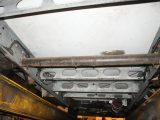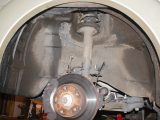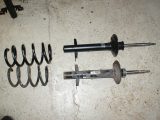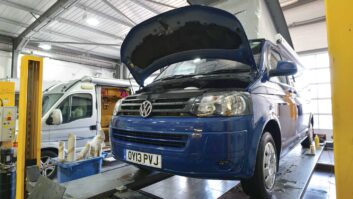There are several particularly important areas of a motorhome’s running gear: tyres, brakes, engine, transmission and, of course, suspension.
When the base vehicle leaves the factory it will have suspension springs sufficiently strong to support the vehicle in a fully laden condition and give an acceptable ride quality, hopefully.
Of course, most motorhomes are built on light commercial vehicle chassis, which perhaps aren’t entirely designed to be fully loaded (or close to) for long periods – but that’s pretty much how most motorhomes live out their lives.
How it works
Vehicle suspension comprises two main parts: the spring and the damper. We often refer to the damper as the shock absorber but that isn’t correct. The spring is the real shock absorber, but if left undamped it would simply bounce uncontrollably and give a very uncomfortable ride.
The damper’s job is to control the spring’s oscillations, which it does by hydraulics. Put simply, the damper is a piston inside a cylinder full of oil.
The piston has valves in it which allow the oil to pass from one side to the other and the size of these valves determines the damping rate. This is a very much simplified description, but should give an idea of how they are supposed to work.
What different types are there?
There are four main types of spring used in vehicle suspension: torsion bar, coil, leaf and air. A spring’s strength is measured as load against deflection and is referred to as the spring rate.
Torsion bars are simply straight bars that twist. One end will be secured to the chassis and the other to the wheel hub via a lever. As the hub moves up and down it twists the torsion bar.
A coil spring is simply a torsion bar wound into a coil and it is still the bar’s resistance to twist that provides the spring action.
Leaf springs are simply flat bars supported at either end with the axle generally located in the middle of the spring. The bar’s resistance to bending gives its spring rate.
Although we call them leaf springs, their real name is a semi-elliptic spring. The spring can be made up from several sections or ‘leaves’ clamped together.
Air springs comprise a rubber bellow that is filled with compressed air. The higher the air pressure and the bigger the diameter of the bag, the more weight it can support.
The spring’s job is to support the mass of the vehicle and absorb shock loads, while allowing the wheels to follow undulations in the road surface, drain covers and pot holes, for example.
Without the springs the ride would be harsh, uncomfortable and positively dangerous. So the spring rate is matched to the vehicle’s loading capacity.
Uprating your suspension
That is all well and good for standard vans and even motorhomes built within the original chassis weight limits. But when we uprate the vehicle’s maximum weight it is often beneficial to uprate the springs.
In fact, the latest generation of SEVEL-based motorhomes can be uprated from 3500kg to only 3650kg without suspension upgrades.
Of course where an Al-Ko chassis is fitted, the torsion bars in the rear axle (or axles if a tandem setup is installed) will be matched to the vehicle’s new design maximum weights.
Air assist kits are a popular upgrade path and can allow for higher upgraded maximum weights. These kits are most commonly fitted to the rear suspension.
Generally the airbags themselves will be mounted between the axle and chassis. Front suspension upgrades are also possible although not as popular as the rear systems, mostly because the rear axle often carries the higher proportion of the vehicle mass and rear air assist kits are often cheaper than a front end upgrade.
Front upgrades generally consist of stronger springs. SEVEL, Ford and Renault use coil springs, but Mercedes-Benz uses a transverse leaf spring.
Where coil springs are used they can be replaced by full air setups involving completely replacing the spring with an air bag. This can give a more compliant ride while still providing full support for the vehicle’s weight, but is a pretty expensive job as a rule.
A difference you can feel
I’ve fitted uprated springs to the front end of quite a few motorhomes now and the improvement in ride quality is always a surprise to the owners.
A common misconception is that higher-rate springs will make the suspension harder and spoil the ride quality, but I’ve found the opposite to be the case.
What happens is that over a few years the original springs settle and lose ride height. This can lead to the suspension meeting its limits of travel and hitting the bump stops.
Higher rate springs will lift the suspension into the middle of its travel range, so it has room to move without hitting the bump stops.
Whenever I fit uprated front springs to a vehicle that is more than four years old, I always recommend new dampers as well. When I started in the motor trade, dampers were generally considered to have a four-year or 40,000-mile lifespan – after four years, the dampers have given their best service.
A keen motorcaravanner, Practical Motorhome’s technical expert Diamond Dave runs his own leisure vehicle workshop. Find out more at Dave Newell Leisure Vehicle Services.
When we uprate the vehicle’s maximum weight it is often beneficial to uprate the springs



















